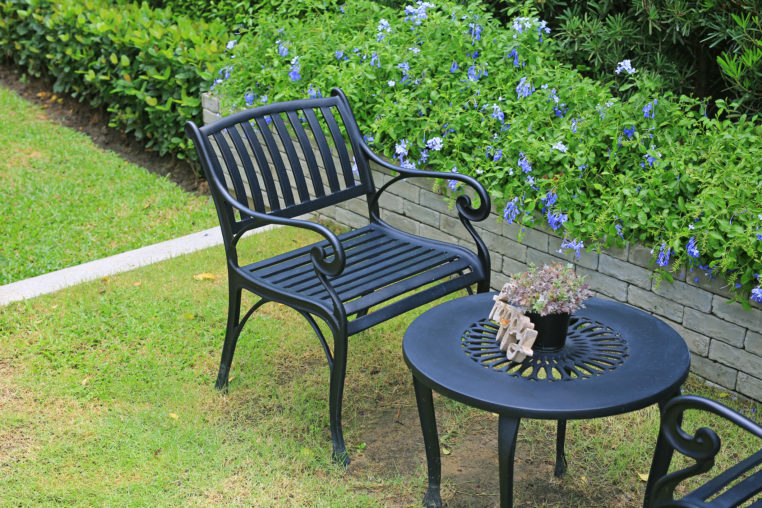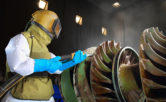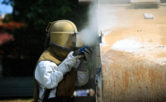
Sandblasting and Painting vs. Painting Alone
Properly finishing a metal fabrication project is crucial for its protection and aesthetics. Function should always come before form, so you want to find a paint type and method that will help it withstand stress and wear, as well as one that will give it the finishing touch you’re looking for.
Compare sandblasting and painting vs. painting alone to determine which option is best suited for your project.
Sandblasting and Painting vs. Painting Alone
Painting a metal fabrication project involves spraying a water-based or solvent-based paint onto the surface, much like any other painting project. Other than primer and a top coat, often combined into one, painting is simple and straightforward.
Sandblasting and painting involves a little more work and includes pre-treatment, application and curing. Sandblasting cleans the surface of the project to remove any debris, grease or previous paint coatings, using an abrasive medium. This technique creates small scratches in the surface, which helps paint cover and bond with the material. Without sandblasting, paint may be more prone to chips and cracks. Sandblasting also strips the rust off of steel, giving it a clean slate for the next protective coating.
After this abrasive process, a zinc-based primer and powder are applied with an electrostatic gun that allows the paint to cover the surface evenly and quickly. It also prevents over-spraying and thick coats that are prone to chips, since it repels the excess.
Once sandblasted and painted, the pieces goes into a curing oven so that the primer can cure and gel. When this process is complete, the final coat of paint gets applied. The final coat is applied the same way as the primer, but this is when the desired color or texture comes through. Once finished, the painted piece goes back into the oven to cure.
Benefits of Sandblasting and Painting
The main benefits of sandblasting and painting vs. painting alone are durability and longevity. More than just a coat of paint, this process prepares the surface, primes the piece and applies consistent coats of paint, along with curing the piece to maximize the protective effects of proper finishing.
Here are some other benefits of sandblasting and painting:
- Resistant to corrosion: Because of the precise primer and paint application, a single coat offers the protection of several coats of traditional paint, without the risk of chips and cracks. Because of this, a sandblasted and painted piece can better withstand the extreme outdoor environment than traditional paint.
- Cost-effective: The sophisticated system of sandblasting and painting prevents overspray, so you get more yield from your paint and waste less.
- Speed: Pieces that are sandblasted and painted dry faster than wet paint, so the entire process happens more quickly. Once the pieces cool, they’re ready to be handled or machined as well, so there’s less downtime.
- Chemical resistance: Certain chemicals can wreak havoc on your finish, but sandblasted and painted finishes are resistant to chemicals and are less likely to chip, crack or wear from contact.
Learn More at AR Powder Coating
As you can see, sandblasting and painting has many advantages over traditional painting. If you’d like to learn more about sandblasting and painting a project, AR Powder Coating can help. Our experts are knowledgeable with all types of techniques, so we’re certain we have the experience needed to tackle your next project. Contact us today to get started!




